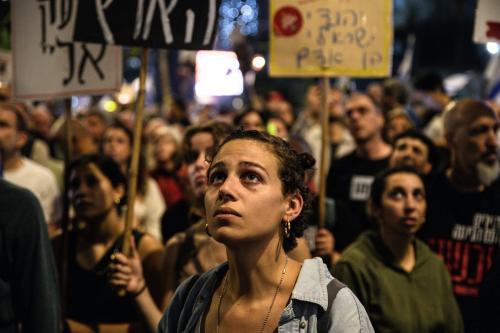Facts have a way of shrinking under the weight of politics. The fierce partisan debate last week set off by the new National Intelligence Estimate on the struggle against terrorism was a case in point. Similarly, our own tracking statistics from the last four years in Iraq will provide ammunition for both supporters and critics of the war. But one fact seems clear: this year’s violence was the worst since liberation, and probably the worst over all since 1991.
American troop fatalities, thankfully, declined somewhat this summer, but it is hard to view that as a positive development since much of the modest improvement was due to the reduced rate of American patrols (down from a daily average of 400 to, in the last year, 100 a year). When American forces do venture out of their base, they are in as much peril as ever. Similarly, the drastic falloff in kidnappings of foreigners primarily reflects the fact that foreigners now rarely leave the Green Zone in Baghdad. Iraqis continue to be kidnapped in large numbers.
While the economy is far from healthy, it has shown some improvement. Oil production has returned, at least for the moment, to levels seen at the end of Saddam Hussein’s rule, and electricity production is at higher levels, especially outside of Baghdad. School enrollment continues to increase; childhood vaccination rates are now respectable; Iraq’s media continue to flourish.
However, unemployment remains at 30 percent or more, as coalition and Iraqi authorities continue to resist the notion of adopting a Roosevelt-style public works program to mitigate joblessness. Inflation is up; private sector investment remains weak because of the security environment; gross domestic product growth has been modest and will probably slow because of the decline in global oil prices. Fuel supplies are stagnant in the face of rising demand.
Public optimism has rebounded a bit since spring, especially among Shiites and Kurds. But Iraqi optimism about the future is still not where it once was. Nor is it clear on what that optimism is based. The Iraqi government continues to flounder in attempts to rein in militias, ensure fair distribution of the nation’s future oil revenue, rehabilitate former low-level Baathists into public life and rebuild the economy. On balance, the data suggest that while Iraq is not lost, the United States and its allies there are hardly winning either.
Andrew Kamons assisted in researching the chart.
|
Categories |
Aug. 2003 |
Aug. 2004 |
Aug. 2005 |
Aug. 2006 |
|
|
|
|
|
|
|
U.S. Troop Fatalities |
36 |
65 |
90 |
63 |
|
U.S. Troops Wounded |
181 |
891 |
608 |
641 |
|
Iraqi Security Force Fatalities |
65 |
65 |
282 |
233 |
|
Iraqi Civilian Deaths from Violence |
700 |
1,500 |
2,000 |
3,000 |
|
Multi-Fatality Bombings |
4 |
13 |
27 |
52 |
|
Foreigners Kidnapped |
0 |
30 |
24 |
0 |
|
Internally Displaced Persons (since April 2003) |
100,000 |
200,000 |
250,000 |
500,000 |
|
Attacks on Oil Assets |
5 |
21 |
9 |
2 |
|
U.S./Other Coalition Troops (in thousands) |
139/22 |
140/24 |
138/23 |
140/19 |
|
Iraqi Security Forces (in thousands) |
35 |
91 |
183 |
298 |
|
Iraqi Security Forces in Top Two Readiness Tiers (our of four; in thousands) |
0 |
0 |
30 |
100 |
|
Oil Production (in millions of barrels per day; prewar peak: 2.5) |
1.4 |
2.1 |
2.2 |
2.2 |
|
Household and Transport Fuel Supplies (as percentage of estimated need) |
57 |
84 |
96 |
71 |
|
Average Electricity Production (in megawatts; prewar: 4,000) |
3,300 |
4,700 |
4,000 |
4,400 |
|
Trained Judges (estimated need: 1,500) |
0 |
200 |
350 |
750 |
|
Registered Cars (in millions; prewar: 1.5) |
1.5 |
2.0 |
3.0 |
3.5 |
|
Children in School (in millions; prewar: 4.6) |
4.6 |
4.8 |
5.1 |
5.2 |
|
Iraqis Optimistic about Future (percent) |
60 |
51 |
43 |
41 |
View the Op-Chart
(graphic by Amy Unikewicz)



Commentary
Op-edThe State of Iraq: An Update
October 1, 2006